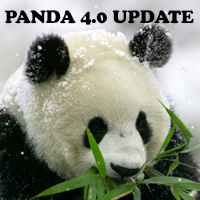
The new algorithms, only the fourth major overhaul in three and a half years, appears to be a powerful variation on the same Panda theme. By prioritizing customized content, including site copy, blog posts, videos and social media streams, Panda 4.0 aims to deliver higher quality and greater relevance to its users. Google’s developers don’t release specific information about their updates; that would defeat the purpose of punishing spam while elevating quality content. The company’s anti-spam guru and public liaison, Matt Cutts, did confirm on May 20 that the dramatic fluctuations analysts saw were indeed related to a major update.
Data analysts can usually look at traffic patterns, compare information against known benchmarks and extrapolate what Google’s latest update does from the trends they see. However, this recent update is harder to read because it was accompanied by an unrelated update: Payday Loans 2.0.
Payday Loans 2.0 and Google’s Update Bonanza
Some verticals are notorious for producing copious amounts of low-value content and outright spam. Payday loans, title loans and related sectors had generated so much spam by last summer that Google developed a set of algorithms expressly to handle queries with high noise-to-signal ratios. Last week, the search engine released an upgraded version of its Payday Loans update that continued to focus on areas that needed extra protection from spam. Analysts aren’t sure how much overlap there is between Payday Loans 2.0’s effects and the actions of Panda 4.0, but in many cases, the two algorithm sets could have been going after the same low-quality content.
Is Your Content Panda-Friendly?
Both Panda 4.0 and Payday Loans 2.0 punish poor content, but if Panda stays true to its predecessors, it also rewards the good stuff. Information-dense content, in-depth articles, useful how-to videos and any other original content intended to educate or entertain generally fares well. Native advertising also thrives, but only if it’s subtle; overt advertorials with little to say beyond pushing a product line rarely impress Google.
Social media also has a greater influence on search engine results than it used to. While it’s unknown yet if that’s true of Panda 4.0, it’s a fair bet that Google has continued the trend of prioritizing content that has plenty of social proof in the form of shares, likes and re-tweets. Social media has another benefit in Google’s eyes: frequency. Because Google prioritizes regularly updated or curated pages, having a social media presence or an active blog can be a big boost to your SEO strategy.
It isn’t possible to optimize specifically for Panda 4.0 – at least not at this point. It’s too new, and as with all major Panda or Penguin updates, it will almost certainly get additional updates that could change how the algorithm determines a site’s worth. Based on past trends, though, it’s a safe bet that the kind of content visitors want – new, original, engaging and informative – is also what Google wants to deliver.
Contact our SEO experts today at 855.867.3224 to start producing quality content that is search engine friendly.






